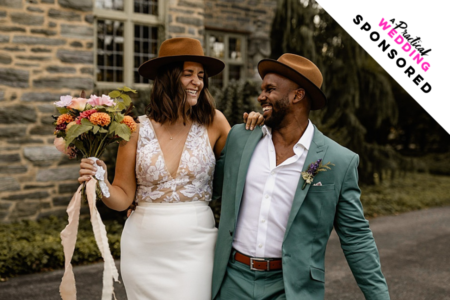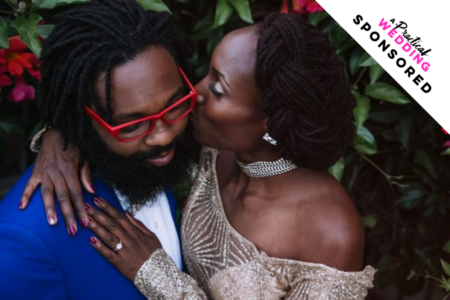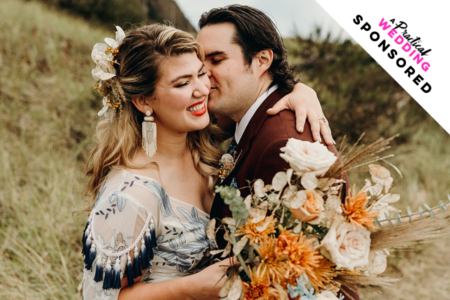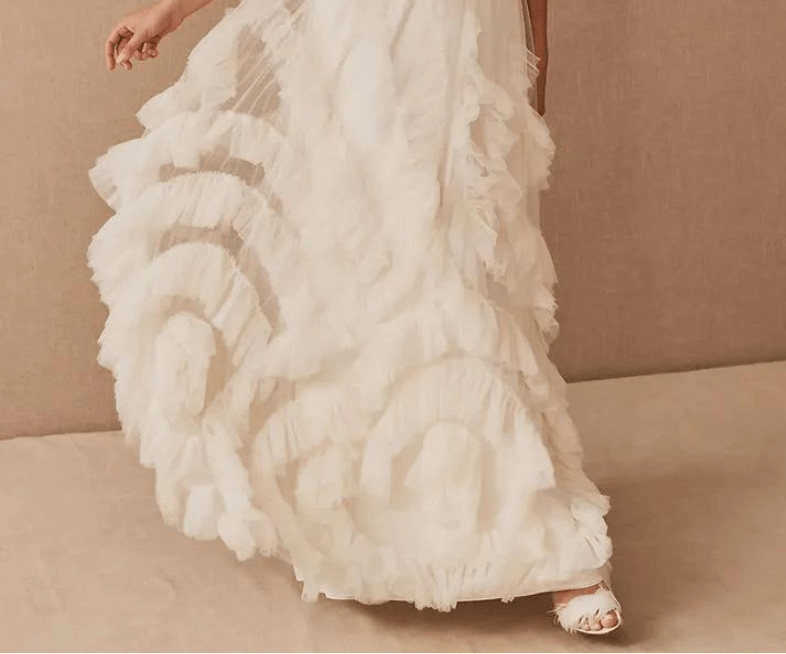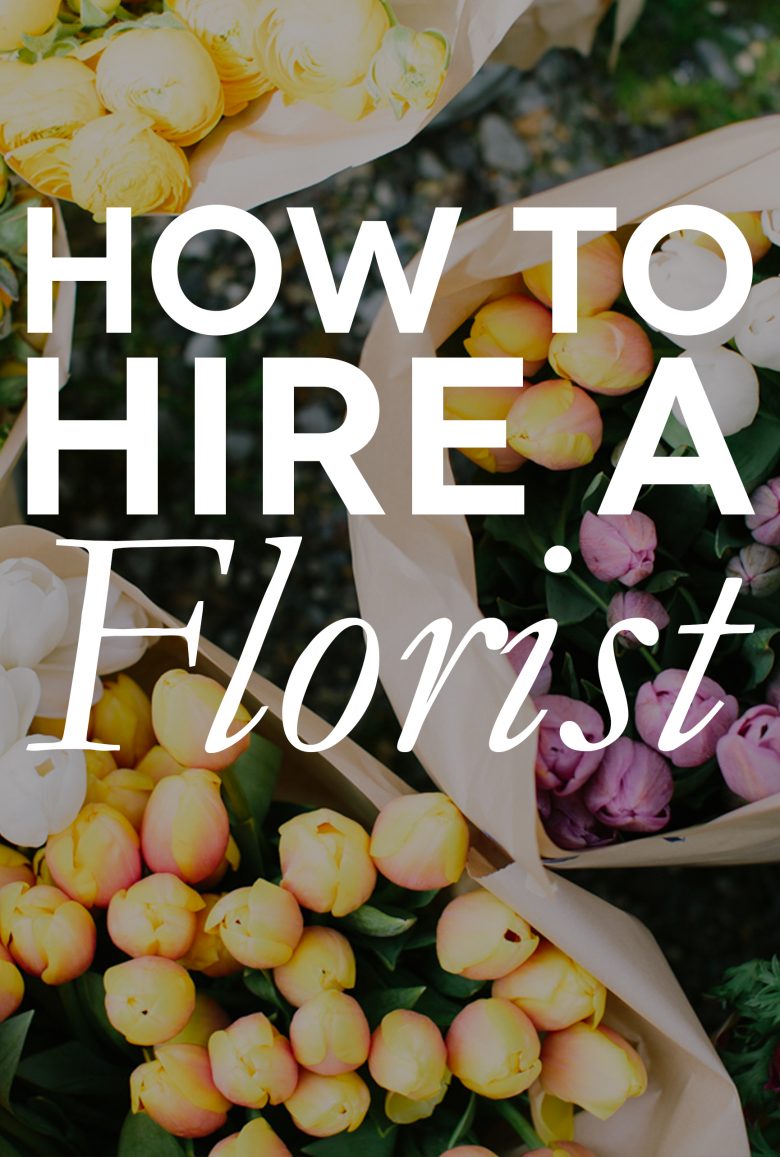
When it comes to planning a party, specifically a wedding, the flowers are one of my most favorite parts. But then again, I’m a wedding planner. It’s part of the job description. As with all things wedding-related, there are many options for how to handle your wedding flowers (including not having any at all): You can DIY, you can partially DIY, you can skip flowers all together, or even use some live plants and fill your garden up after the wedding. And if it works for you and your budget, you can also hire a florist. (Not sure which route is best for you and your wedding? You might want to start with APW’s page on wedding flowers. And if you decide to DIY, APW has some great #lazygirl floral tutorials too.)
If you’ve already got your heart set on hiring a florist for your wedding, then you’ve probably realized that the Internet is flush with options. And because there are a million different floral services for just about every situation you could imagine, Google isn’t always helpful for figuring out which one is right for you and your wedding. So today we’re breaking down the basics of how to hire a florist, from a planner’s perspective:
Types of Florists
First of all, it’s important to note that there are different types of florists and services available out there:
Retail Florist: These are the street shops you see where you can stop for a bouquet of roses. They are wonderful resources for small orders and items but are not always equipped for or accustomed to servicing full events. Sometimes these shops will do funeral display pieces, but more often than not they are not who you want to use for your wedding.
Floral Designer: This is your standard wedding florist. The one who specializes in creatively combining beautiful flowers into bouquets, boutonnieres, centerpieces, and decor items for your event. They are generally creative/artistic people who are able to customize their style to the event they are working on (or at least, they should be, but more on that in a minute). When you work with a floral designer you are paying for their flowers, their services, and their creative artistry.
Full-Service Event/Floral Designer: There can be some crossover between this and the option above. When you work with a full-service designer like this, you are looking at the option to get not only your flowers, but candles, table numbers, paper goods, and any other decor pieces you might want. These super talented artists are usually most helpful if you have design ideas about your event, but need help executing, and would rather work with one person on all of it.
Before you start looking for a florist
Before you start contacting local florists and trying to find the one who will help you with your wedding, there are some important things to think about and know:
- Figure out if flowers are a priority: Depending on the length of your engagement, when you’re getting married, and how important flowers are to you, you may want to start looking at florists pretty early in the process. Many florists are one-man/woman shops who are only able to do one wedding per day or weekend, and they can book up quickly (especially if you’re getting married during high wedding season).
- Ballpark your budget: As hard as it may be at this stage in planning, it’s also helpful to have some general idea of the budget you are working with for floral design. (Have no idea what that might be? Check out my article here on wedding budgets.) If you start reaching out to florists without a budget in mind, you could end up with quotes that range from $1,500–$15,000 (which is not so helpful).
- Identify your style: Before you get in touch with anyone, it’s helpful if you have an idea about the types of flowers and floral design you like. Look around Pinterest and real weddings to start getting a feel for the styles and types of flowers you prefer, but don’t overthink this part too much. A lot of what you’ll end up with will depend on what’s in season and what your budget can accommodate (because it’s totally possible that the bouquet that looks like you could make it yourself actually cost $400).
Figuring out your floral style
Once you’ve figured out what kinds of flowers you prefer, it’s helpful to have some words to put with your ideas so you know what you’re asking when talking to potential florists. Here are some of the most common floral styles you’ll see:
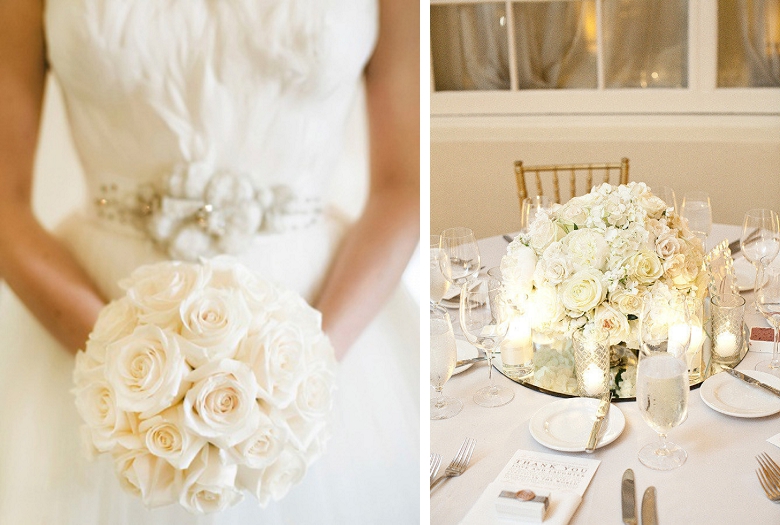
Classic: Classic floral design is usually round and crisp, and often features roses. (Bouquet by Doll’s Blumen, image by Claire Morgan via Martha Stewart Weddings. Centerpiece by Jackson Durham, image by Melissa Schollaert Photography via Style Me Pretty.)
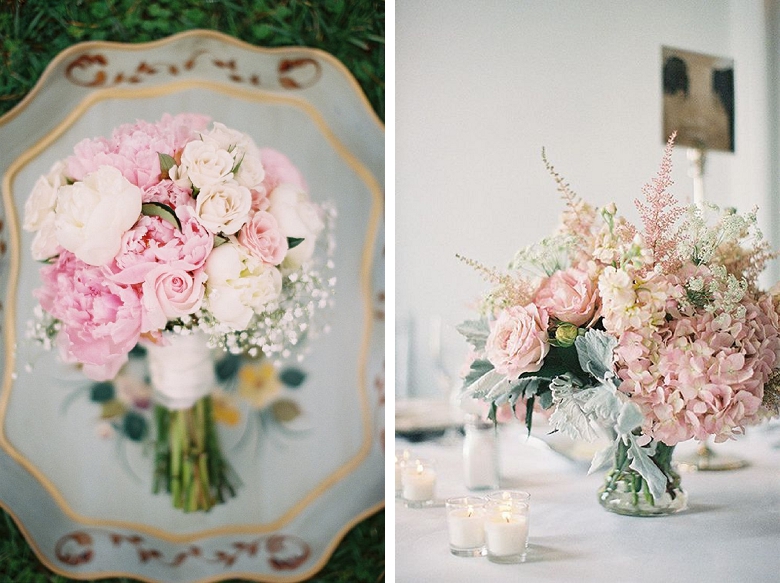
Romantic: Romantic designs feature looser, fluffier flowers, and often utilize neutrals in the pink family (think white, beige, and blush). (Bouquet by The Ivy Cottage Flowers and Gifts, image by Ashley Seawell Photography via Mod Wedding. Centerpiece by Sisters Floral Design Studio, image by Clairy Pfeiffer via Elizabeth Anne Designs.)

Natural: These flowers are inspired by (you guessed it) nature, and feature more greenery, and loose, organic designs. (Bouquet by Blush and Bloom, image by 3Photography via Ruffled. Centerpiece by Verbena Floral Design, image by Loft Photographie via Style Me Pretty.)
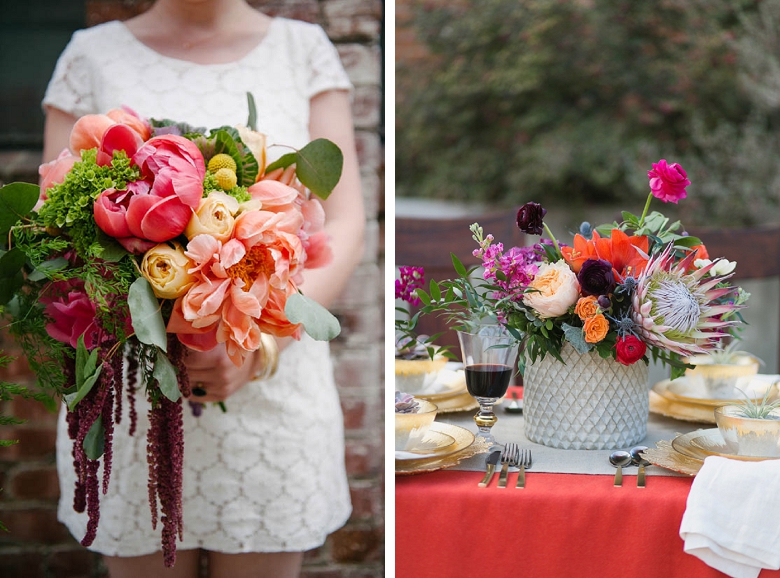
Bold: Want something a little outside the box with bright flowers and major color? Bold is what you’re looking for. (Bouquet by Belle Flower, image by Allison Andres Photography via A Practical Wedding. Centerpiece by The Southern Table, image by Charla Storey Photography via Style Me Pretty.)

Modern: A more minimal design, usually featuring clean lines and modern shapes. (Bouquet by Designs by Ahn, image by Belatheé Photography via Erganic Events. Centerpiece by Justine Rose, image by Photography by Caspix via Ruffled.)
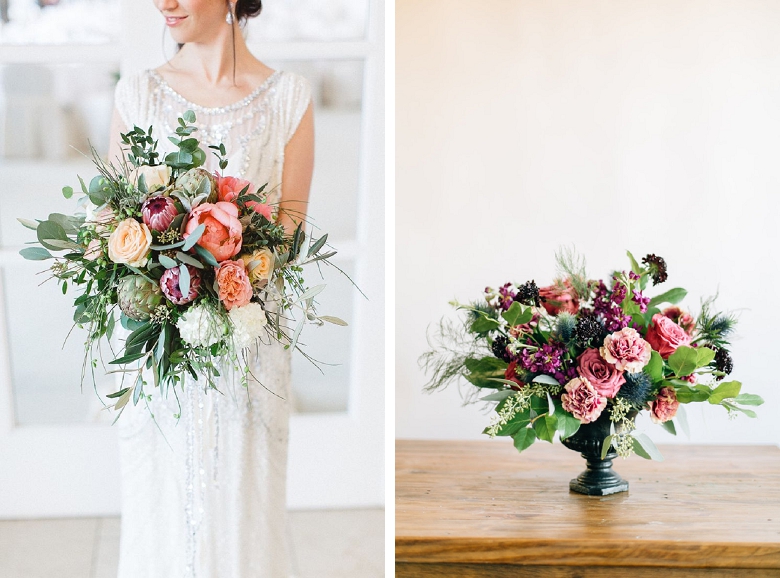
Wild: Wild floral design is having a moment right now. This style is typically characterized by lots of different colors and textures, and a looser more free-flowing design. (Bouquet by Helene Gutjahr, image by Kibogo Photography via Style Me Pretty. Centerpiece by Michelle Edgemont, image by City Love Photography via A Practical Wedding.)
In reality, most of these styles have a lot of overlap (maybe you want a wild bouquet with romantic colors, or a classic bouquet with a natural vibe), so don’t worry about figuring out the exact term for what you want. Instead, use these ideas as a guide when doing your research and communicating with your florist.
Ready to Research
Now that you have a style in mind and a budget in hand, you’re ready to start researching florists. Here are the steps I recommend following while you’re on the hunt.
1. While Google is good for many wedding-related things, flowers are generally not one of them. Google is programmed to give you the most popular search results, which in the floral industry usually means national chains and their affiliates. So if you want a local florist, the best place to start is by asking friends and family who may have gotten married recently (especially if you were at their wedding and loved their flowers).
2. Use wedding websites to help you hunt for vendors that are trusted and reviewed. The APW Vendor Guide, Here Comes the Guide, and Wedding Wire are good places to start. Pro tip: If you find flowers on Pinterest that you really love, click through to the original post where they were published. Wedding blogs usually include vendor information at the bottom of all real weddings and styled shoots, and usually list the name of the city in the post, so it’s not hard to figure out if the vendors are local to you. Then, if possible, cross-check against the review sites to see feedback from actual customers.
3. Once you’ve narrowed it down, take a look at the websites and portfolios of the florists you find. You should be able to tell pretty quickly if they have work you like. Keep in mind: While most reputable florists should be able to accommodate a variety of styles, some designers specialize in just one. So keep an eye out for variety. For example, if you’re looking for more modern flowers and notice that one of the florists you’re considering has a portfolio full of loose, whimsical, natural-looking arrangements, and nothing else, you might want to consider looking elsewhere.
4. Check for pricing. Many florists work on such a customized basis that they don’t have pricing listed on their site. Some, however, will list a minimum that can help you determine right away if they can work with your budget. Worth noting: Those minimums are usually for full wedding flowers (bouquets, centerpieces, other arrangements, etc). So if you’re just looking to get what I call “personals” (aka bouquets and/or boutonnieres), then the minimum may not apply. In that case, it’s best to reach out and ask.
5. Once you’ve narrowed down your potential florists, reach out for quotes (and be honest about your budget. It will save everyone time). Depending on how many make the final cut, I recommend meeting with or having a call with anyone you’re seriously considering. Even though you won’t be working with them extensively on the day of, you’ll want to make sure you get along and understand each other. This is your moment to pick their brain about their style, vision for your wedding, and ideas they may have. If you’re not sure what to talk about in the meeting, here are some questions that can help you figure out a potential florist’s working style:
- What’s their design process? Will you do a joint Pinterest board? A design brief? Do you just tell them what you like and let them do their thing?
- If you’re doing centerpieces, do they have containers you can rent? Will you need to provide your own?
- Do they help with setup, or will you need to arrange pickup from a studio? Is there a delivery fee?
- If they provide containers for your flowers, will they come pick them up after the wedding or will you need to return them yourself?
- What do they do if they can’t provide something you’ve agreed upon (e.g., if there’s a ranunculus shortage the week of your wedding, what’s the protocol?)?
- Do they recommend doing a trial? Will it cost extra?
The proposal:
Once you’ve found a florist you like and you’ve agreed on a budget and design style, you’ll get a proposal (which, when signed, becomes your contract). This is important, because there are a lot of extra variables that can factor into the final product you receive on your wedding day. So pay extra attention to the provisions at the bottom of the proposal before you sign, and make sure you’re OK with how the florist will handle things like the ranunculus shortage mentioned above. (And if you’ve got a lawyer friend or just… a lawyer, it never hurts to ask them to go over your wedding contracts before you sign. Don’t be afraid to negotiate or ask for changes if you’re uncomfortable with something listed in the provisions.) Here’s a sample proposal from an actual wedding I worked this year (keep in mind these are Bay Area prices, and actual floral prices will vary based on where your wedding takes place):

Once you sign on the dotted line, then you and your florist get to move on to the fun part: bringing your proposal to life. But you don’t need my help with that (that’s what you hired the pro for.)
Have other questions about hiring a florist? Leave them in the comments!

